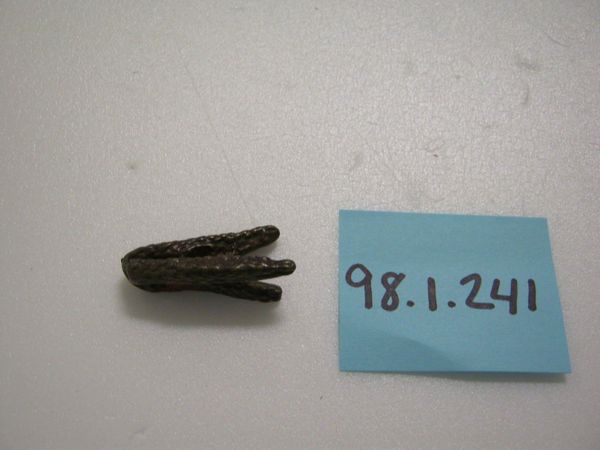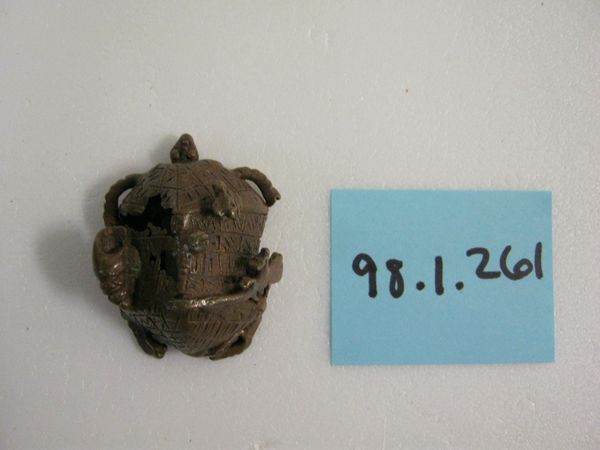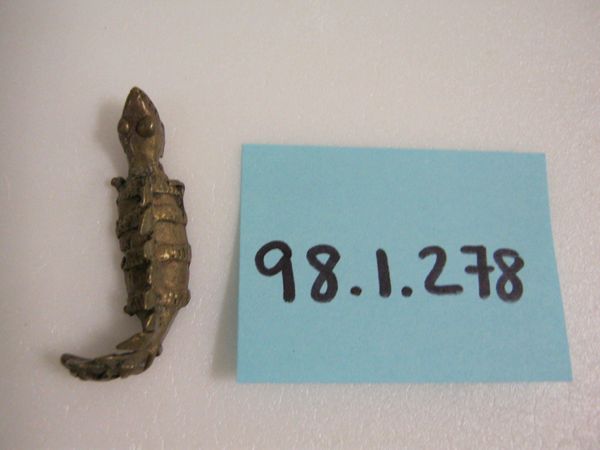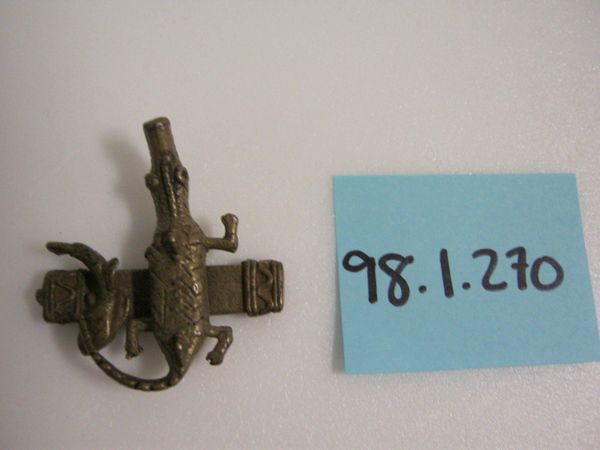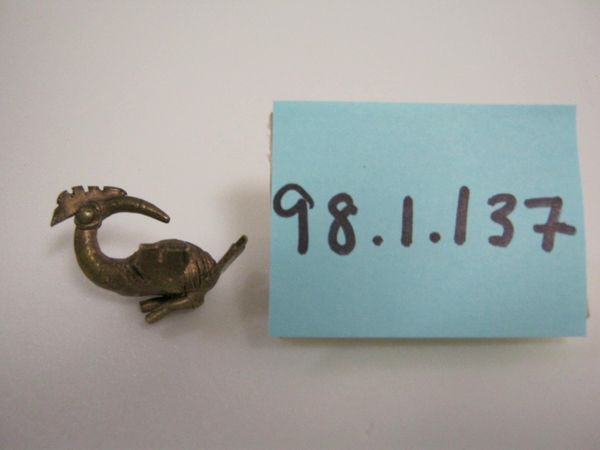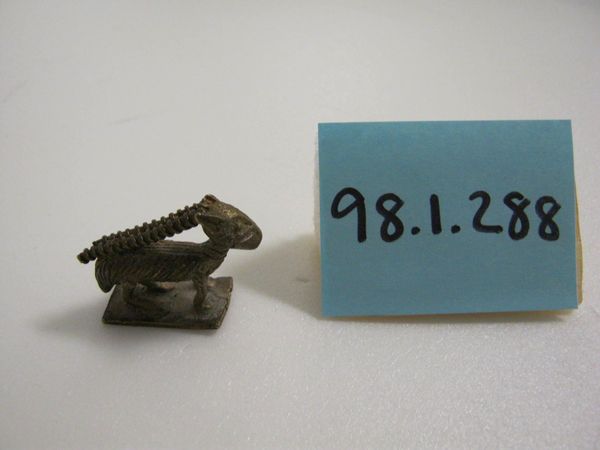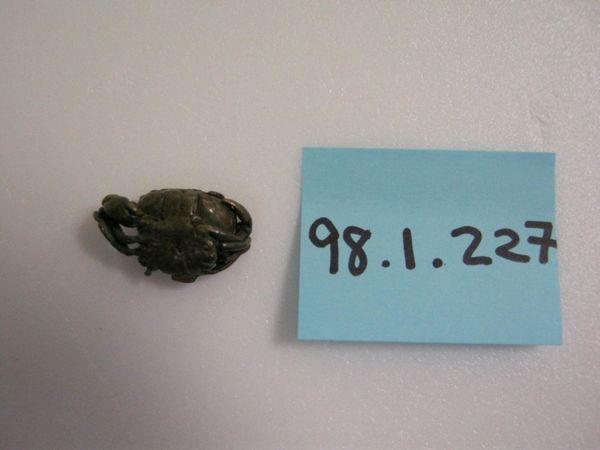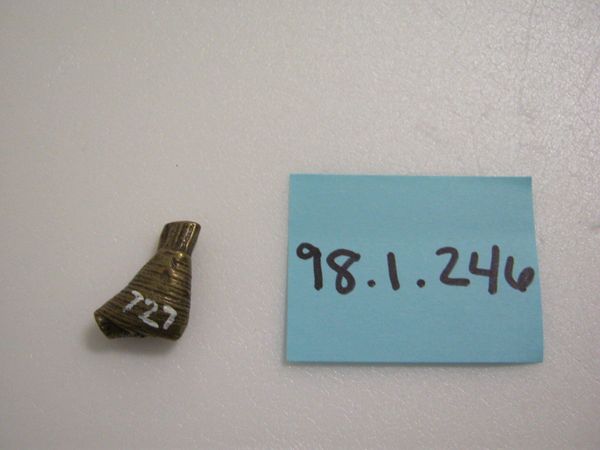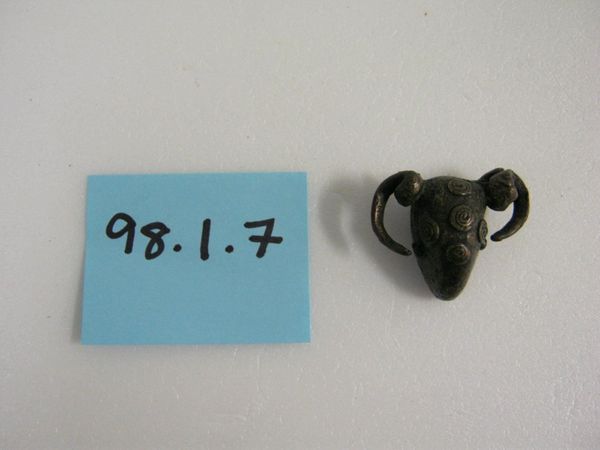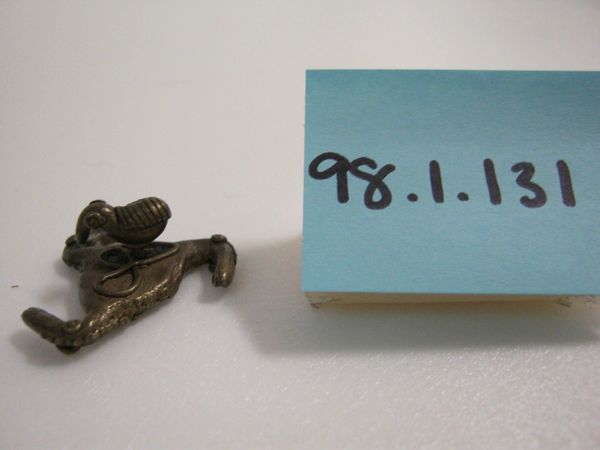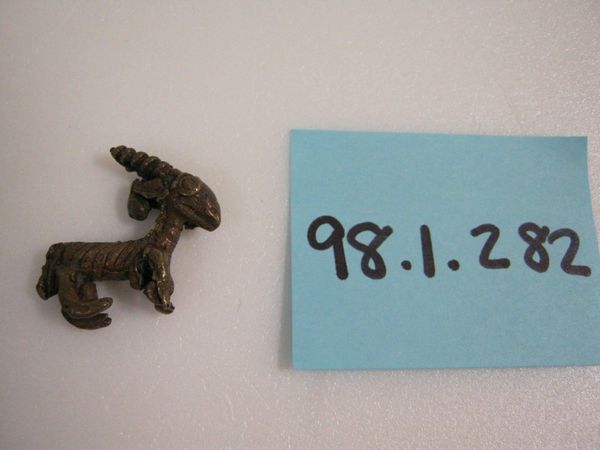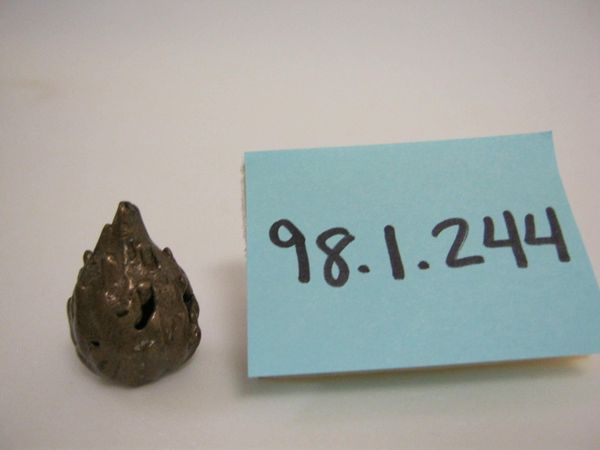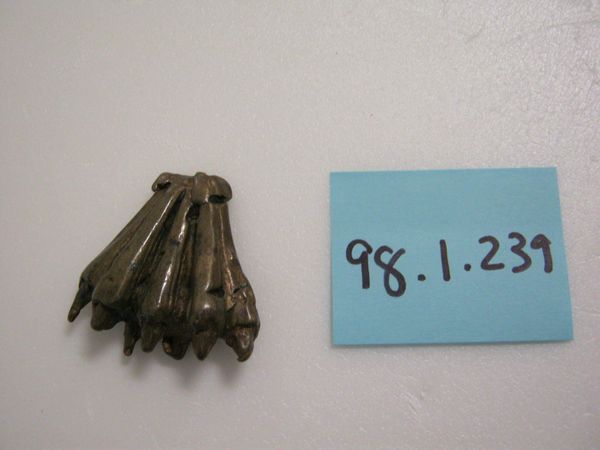![Goldweight [Calabash] by Akan](/_next/image?url=https%3A%2F%2Fd2w8kbdekdi1gv.cloudfront.net%2FeyJidWNrZXQiOiAiYXJ0ZXJhLWltYWdlcy1idWNrZXQiLCAia2V5IjogImFydHdvcmtzLzc4MzczMTVlLTc4MmUtNGJlYy1iZTk1LWUxZWY0MWU3YWY4Yy83ODM3MzE1ZS03ODJlLTRiZWMtYmU5NS1lMWVmNDFlN2FmOGNfZnVsbC5qcGciLCAiZWRpdHMiOiB7InJlc2l6ZSI6IHsid2lkdGgiOiAxOTIwLCAiaGVpZ2h0IjogMTkyMCwgImZpdCI6ICJpbnNpZGUifX19&w=3840&q=75)
brass, sculpture
brass
indigenism
sculpture
Dimensions: 1 13/16 x 7/8 x 7/8 in. (4.6 x 2.22 x 2.22 cm)
Copyright: Public Domain
Curator: This is a goldweight from the Akan people, crafted sometime in the 19th or 20th century. It’s currently part of the collection at the Minneapolis Institute of Art. They used brass to create this sculpture. Editor: My first thought is it has this lovely weathered texture. Like it's held secrets and been through countless hands. A real talisman. What exactly is a goldweight? Curator: Precisely. These weren't just decorative. The Akan people, in what is now Ghana, used these small brass sculptures as weights to measure gold dust. Gold dust was the main currency there. The weight we see before us is in the shape of a calabash, also called a gourd, and was primarily an image reflecting independence, self-sufficiency, and sustainability, and that the individual carried a great responsability of keeping their people alive. Editor: The calabash seems more than functional. Is it symbolic as well as practical? There's this interesting twist, a very intriguing sculptural presence. Like it wants to reach out, twist our thoughts with symbolism, perhaps? It's compact, but so potent with meaning. Curator: Absolutely. While functional, Akan goldweights were also embedded with profound meaning, tapping into a rich tapestry of symbolism rooted in Akan culture, history, and proverbs. This could represent, say, prosperity. Gourds hold water. Without the gourds holding the water in harsh weathers, noone could have survived those tough moments. Editor: That's the sort of richness that these objects often hold isn’t it? What seems simple can become, can whisper cultural histories when we learn to look closely. The patinas of everyday objects become such profound palimpsests. It does lend it a very striking aesthetic presence. It almost makes you think what else it represents. Curator: You're right, it's precisely that blend of the everyday and the symbolic that gives objects like these so much resonance, something passed down, shared. Its small size contains a very wide landscape. It invites a certain reverence for the past, as well as self sufficiency. Editor: Right. It makes me reflect on how such compact creations held entire economic and philosophical universes within them.
Comments
No comments
Be the first to comment and join the conversation on the ultimate creative platform.

